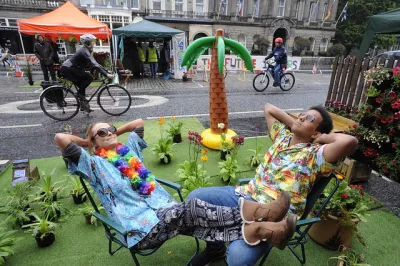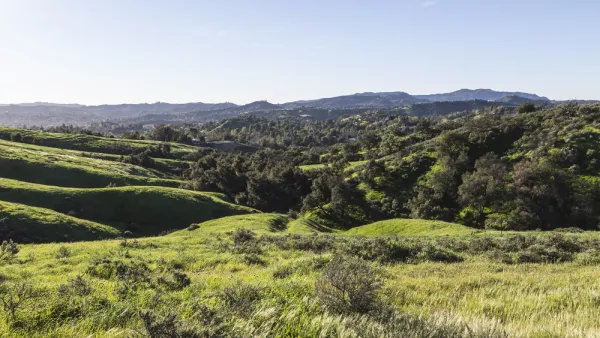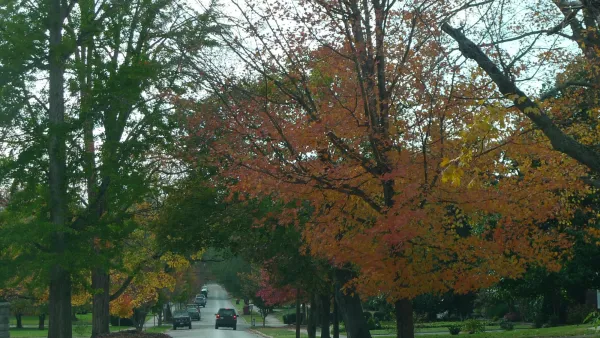A new study finds that interim recreational use of underutilized sections of crowded cities can benefit more than just humans.

Adina Solomon shares news of research recently published in the Environment International journal that finds evidence of the health, social, and environmental benefits of urban green space, and makes the case for interventions that create new urban green space, even if just temporarily.
Solomon explains:
Sometimes, cities lack large greenspace not only for people but for wildlife — the insects, birds and other animals that make for a balanced ecosystem.
One answer to this issue? Pop-up parks, according to a new study examining their effects on biodiversity.
Luis Mata, ecologist with the People, Nature, Place research program at Royal Melbourne Institute of Technology University’s Centre for Urban Research, and team examined the Grasslands, a six-week park in Melbourne.
"Like many pop-up parks, Grasslands is not what many people envision when they think of greenspace," according to Solomon. But the park showed significant biodiversity in its insect and spider population, which means benefits for pollination and nutrient cycling.
To further exemplify some of the concepts and outcomes under examination by Mata's research, Solomon also cites the example of the Pop-Up Urban Park in Wichita, Kansas.
FULL STORY: Pop-Up Parks Lead to More Biodiversity in Cities, Study Finds

National Parks Layoffs Will Cause Communities to Lose Billions
Thousands of essential park workers were laid off this week, just before the busy spring break season.

Retro-silient?: America’s First “Eco-burb,” The Woodlands Turns 50
A master-planned community north of Houston offers lessons on green infrastructure and resilient design, but falls short of its founder’s lofty affordability and walkability goals.

Delivering for America Plan Will Downgrade Mail Service in at Least 49.5 Percent of Zip Codes
Republican and Democrat lawmakers criticize the plan for its disproportionate negative impact on rural communities.

Test News Post 1
This is a summary

Test News Headline 46
Test for the image on the front page.

Balancing Bombs and Butterflies: How the National Guard Protects a Rare Species
The National Guard at Fort Indiantown Gap uses GIS technology and land management strategies to balance military training with conservation efforts, ensuring the survival of the rare eastern regal fritillary butterfly.
Urban Design for Planners 1: Software Tools
This six-course series explores essential urban design concepts using open source software and equips planners with the tools they need to participate fully in the urban design process.
Planning for Universal Design
Learn the tools for implementing Universal Design in planning regulations.
EMC Planning Group, Inc.
Planetizen
Planetizen
Mpact (formerly Rail~Volution)
Great Falls Development Authority, Inc.
HUDs Office of Policy Development and Research
NYU Wagner Graduate School of Public Service





























